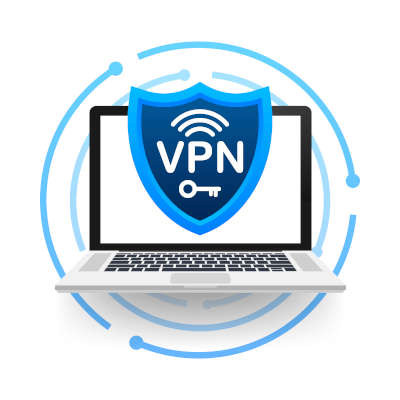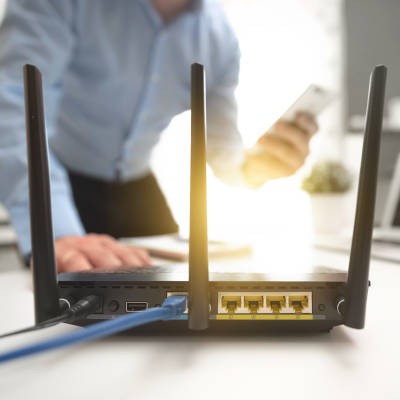Sometimes it can be easy to take cybersecurity for granted, especially when you consider that built-in security features are more powerful than they have ever been. Unfortunately, if you think that cybersecurity is something that ends with the built-in security of your desktops and laptops, then you’re in for a rude awakening.
k_Street Consulting, LLC Blog
As time passes and your business accomplishes great things, you might find yourself in positions where your network cannot handle its normal everyday workload. When there is so much network traffic and data transference, it can be difficult to identify where and why this slowdown occurs. What is a network bottleneck, and how can you resolve this issue?
Over the week of June 14, a lot of applications and websites experienced outages, creating problems for many companies until it was resolved. Not only did these outages create business continuity issues, they’ve also exposed just how vulnerable the Internet is to these kinds of issues. Let’s take a look at what happened.
One of the major shifts we’ve seen in business in 2020 is the establishment of the remote workforce. Stay-at-home orders brought on by the COVID-19 pandemic made it necessary for businesses to find solutions on how to securely transfer information from what could be unprotected networks. The virtual private network is a solution to this problem. Today, we will describe what a VPN is, what its primary use is, and how secure it really is for secure file transmission.
Patients and hospital visitors have come to expect Wi-Fi internet access. It’s no longer seen as an extra convenience, but a requirement for the comfort and confidence of your patients. That said, it’s your responsibility to provide reliable Wi-Fi access that is reasonably fast, secure, and easy to sign into.
It hasn’t been too long since connectivity required an actual physical connection between the connecting endpoints, making a wired connection the de facto option for businesses. However, now that wireless connectivity is so widely available, businesses now have a choice… but which is the better option? Let’s compare some of the pros of each to make the answer a little clearer.
It’s true that Voice over Internet Protocol (VoIP) is probably going to be cheaper than using an enterprise phone system through your regional phone company. While cost reduction is a good reason to choose a service, VoIP does much more than just reduce communication costs. Implementing a VoIP platform also presents a lot of solid options that can help your business be more efficient and productive.
The Internet has expanded people’s ability to do business, and with it has spurred on a series of innovations that have effectively changed the world. With today’s businesses almost assuredly spending on at least one cloud-based solution, and with mobility eking into almost every business in one form or another, the demand for more bandwidth is something most businesses are wrangling with. Today, we’ll describe what having enough bandwidth means.
Small and medium-sized businesses (SMBs) simply don’t have the large budgets that come with running an enterprise, and because of this, many of them have trouble affording IT maintenance and management. In a similar sense, these smaller organizations struggle with planning out an IT infrastructure. Does your business have a plan in place?
There’s a big reason why phishing is a primary threat to businesses, and it’s because this method gives hackers a relatively risk-free way of gaining access to a network or other resources. Even being aware of the issue is often not enough to prevent it, as hackers are known to get quite aggressive and crafty with their phishing campaigns. If only a fraction of the 57 billion phishing emails that go out every year are taken seriously, hackers make quite a bit of profit off of users.
There are plenty of small irritations to be found in the office, from a pot of coffee that someone neglected to refill to the sound of a squeaky chair under the office fidgetier. However, none are quite as infuriating (or as detrimental to productivity) as an inconsistent Wi-Fi signal. What makes the Wi-Fi so spotty, and how do you resolve that?
It can be challenging and costly to maintain your business’ network system, but it doesn’t necessarily have to be. A managed service provider can help your business achieve all of its technology-related goals, including regular network maintenance. You might be surprised by how many benefits proactive network maintenance can provide for your organization.
The Internet of Things is a bit of a paradox in and of itself. It has been leveraged to accomplish great things, but at the same time, it can be used in a way that can create considerable problems. However, innovations have proven that the IoT isn’t going anywhere, anytime soon, especially now that it can use the devices that we carry in our pockets.
Businesses of all sizes have come to depend on their IT for productivity. IT administrators that constantly monitor their network and infrastructure reduce downtime, leading to higher resource availability. With the increasingly complex makeup of an organization's network this becomes quite the task.
Your wireless router is both an integral part of your business’s online infrastructure, and a critical part of your home computing environment. Therefore, you need to make sure that your router is broadcasting a clear signal. Here are some tips on how to keep your wireless signal as strong as possible, regardless of where you are in the office.
 The purpose of your company’s information technology is to create, access, and share the data that your business needs to get the job done. One challenge that stems from exchanging such valuable information is the chance of it getting intercepted by the prying eyes on the Internet. Taking advantage of a Virtual Private Network (VPN) is the best way to safeguard your organization from this risk.
The purpose of your company’s information technology is to create, access, and share the data that your business needs to get the job done. One challenge that stems from exchanging such valuable information is the chance of it getting intercepted by the prying eyes on the Internet. Taking advantage of a Virtual Private Network (VPN) is the best way to safeguard your organization from this risk.
 More businesses than ever before are finding value in allowing their workers to work from the comfort of their own homes, rather than have them drive all the way to the office to do a job that can be done from anywhere with an Internet connection. More importantly, it’s much more cost effective for businesses to allow for remote workers. How can you make it as easy as possible for remote workers to get their jobs done?
More businesses than ever before are finding value in allowing their workers to work from the comfort of their own homes, rather than have them drive all the way to the office to do a job that can be done from anywhere with an Internet connection. More importantly, it’s much more cost effective for businesses to allow for remote workers. How can you make it as easy as possible for remote workers to get their jobs done?
 Direct denial of service attacks are a major problem for businesses. On one hand, they’re difficult to prevent entirely, incredibly annoying, and costly. Hackers are realizing just how annoying DDoS attacks can be, and are capitalizing on them in order to both make a quick buck, and to take jabs at organizations that aren’t necessarily doing anything wrong.
Direct denial of service attacks are a major problem for businesses. On one hand, they’re difficult to prevent entirely, incredibly annoying, and costly. Hackers are realizing just how annoying DDoS attacks can be, and are capitalizing on them in order to both make a quick buck, and to take jabs at organizations that aren’t necessarily doing anything wrong.
 “The call is coming from inside the house!” This memorable quote is from the 1979 horror classic When a Stranger Calls. In the movie, this chilling information is presented to a woman after she has her call traced to locate the whereabouts of a stranger who was harassing her. To be sure, this would be a scary situation for anybody to experience; it would almost be as frightening as a network security breach--originating from inside your IT department!
“The call is coming from inside the house!” This memorable quote is from the 1979 horror classic When a Stranger Calls. In the movie, this chilling information is presented to a woman after she has her call traced to locate the whereabouts of a stranger who was harassing her. To be sure, this would be a scary situation for anybody to experience; it would almost be as frightening as a network security breach--originating from inside your IT department!
 In order for an organization to maintain operations, a strong network that’s capable of handling internal traffic is necessary. These networks handle the deployment and access of mission-critical data, applications, and other important tasks that businesses depend on. Sometimes, however, a business can push their network too hard, which can have a profound effect on its functionality, and an even greater effect on that organization’s ability to continue operations.
In order for an organization to maintain operations, a strong network that’s capable of handling internal traffic is necessary. These networks handle the deployment and access of mission-critical data, applications, and other important tasks that businesses depend on. Sometimes, however, a business can push their network too hard, which can have a profound effect on its functionality, and an even greater effect on that organization’s ability to continue operations.
 As a business professional, you have a responsibility to ensure that your company’s network and data is protected from hacking attacks. It can be difficult to remember to take all of the necessary precautions, but with our help, you can easily outline all of the measures that should be taken to maximize security for corporate data.
As a business professional, you have a responsibility to ensure that your company’s network and data is protected from hacking attacks. It can be difficult to remember to take all of the necessary precautions, but with our help, you can easily outline all of the measures that should be taken to maximize security for corporate data.
 When a print job doesn’t go exactly how you need it to, it’s normal to call your printer some choice words, which may include one of the many colorful synonyms for excrement. Perhaps this stems from a printing network and a toilet having a lot in common. How’s that you ask? Let’s clear the air and find out.
When a print job doesn’t go exactly how you need it to, it’s normal to call your printer some choice words, which may include one of the many colorful synonyms for excrement. Perhaps this stems from a printing network and a toilet having a lot in common. How’s that you ask? Let’s clear the air and find out.
 A business's IT infrastructure is complex and confusing. Just like a puzzle, it is made up of several vastly different pieces that come together to perform a particular function. One of the things that ties an IT infrastructure together is a KVM switch. Without a quality KVM switch, your network might fail to operate properly. Here are a few tips to help you choose the right KVM solution for your business.
A business's IT infrastructure is complex and confusing. Just like a puzzle, it is made up of several vastly different pieces that come together to perform a particular function. One of the things that ties an IT infrastructure together is a KVM switch. Without a quality KVM switch, your network might fail to operate properly. Here are a few tips to help you choose the right KVM solution for your business.




















